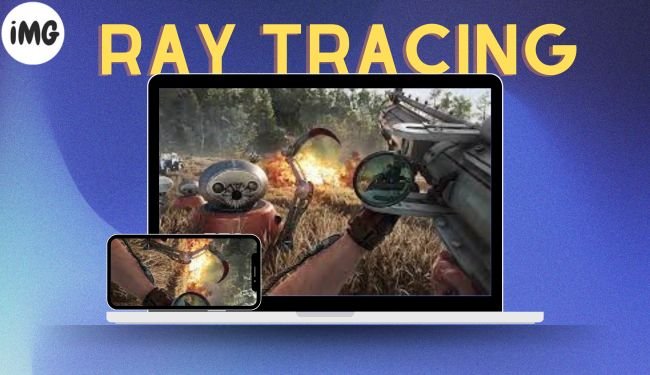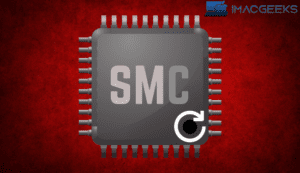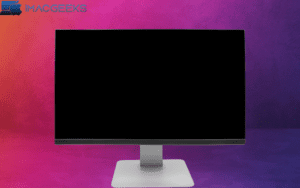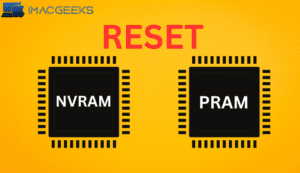Ray tracing is a graphics rendering approach that emulates how light behaves in the actual world, resulting in more realistic lighting, shadows, and reflections than previous methods. Apple’s new M3 CPUs and iPhone 15 Pro have hardware-accelerated ray tracing, allowing it to be executed more quicker and more effectively than on earlier devices. Read on to discover more about ray tracing, how it works, and what it means for M3 Mac and iPhone 15 Pro users.
What is hardware ray tracing on the M3 Mac?
Apple’s newest M3 processor family has lifted the standard for high-end laptops, offering the most realistic and immersive visuals ever seen in a portable device owing to hardware ray tracing.
As previously said, ray tracing is a rendering technique that replicates the passage of light rays in a scene, resulting in dazzling reflections, realistic shadows, correct lighting, and refractions.
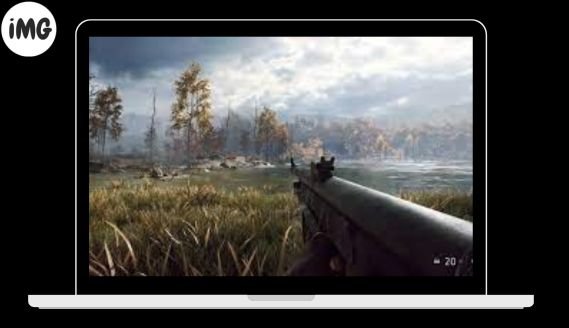
The hardware-based ray tracing solution makes advantage of the M3 chip’s specific ray tracing cores, which are more efficient than software ray tracing. In addition to lowering latency, these devices maintain high frame rates using real-time computations.
With such an incredible increase, customers may expect improved performance whether gaming or utilizing high-end programs on the M3 MacBook Pro or M3 iMac.
Overall, hardware ray tracing has solidified the M3 MacBook Pro’s reputation as a go-to tool for professionals that require speedy and precise visualization approaches in their work.
Apple M3 chips include dynamic caching and mesh shading
Other important advantages of the M3-chip family are Dynamic Caching and Mesh Shading, which improve speed and rendering.
- Dynamic Caching lowers memory latency and boosts overall performance by intelligently caching frequently requested data on the chip. As a consequence, graphically intensive apps and demanding video games function smoothly and effortlessly.
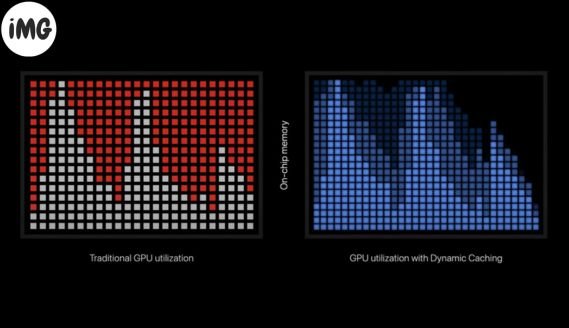
- Mesh Shading, on the other hand, is a cutting-edge graphics rendering approach that increases realism and detail in generated scenes by more efficiently utilizing GPU resources. Meshlets break large 3D models into smaller fragments, allowing shading methods to be applied per meshlet.
Taking all of these considerations into account, Dynamic Caching and Mesh Shading enable users to experience visually appealing images while optimizing processing power.
What does ray tracing mean on the iPhone 15 Pro series?
Ray tracing is a cutting-edge rendering method built into the newest iPhone 15 Pro/Pro Max models, enabling for more realistic visuals and never-before-seen lighting effects. It replicates light ray behavior in a virtual environment, correctly tracking their routes and interactions.
Ray tracing, in its most basic form, simulates how light interacts with objects in 3D space to produce convincing shadows, reflections, refractions, and global lighting. Unlike the typical rasterization techniques used in most devices, ray tracing provides unprecedented realism by taking into account how light bounces off many surfaces and objects in a picture.
As a consequence, the lighting are properly calculated and delicate features are accurately replicated. Overall, it’s reasonable to conclude that by including ray tracing technology into the iPhone 15 Pro, Apple is pushing the frontiers of iPhone gaming and content production experiences. It is an enticing choice for both professionals and game lovers.
How can hardware ray tracing improve graphics on the iPhone 15 Pro models?
Ray tracing on the iPhone 15 Pro is enabled by specialized 19 billion transistors in the device’s graphics processing unit (GPU). It can execute 35 trillion operations per second and was created primarily to tackle complicated ray-tracing computations.
The powerful A17 Pro processor has significantly improved iPhone gaming. The A17 Pro chip’s six-core GPU has dedicated ray-tracing acceleration, allowing users a more immersive gaming experience than ever before. Indeed, the A17 Pro processor outperforms the A16 Bionic chip by four times.
Unlike software-based ray tracing, which is primarily dependent on the CPU and can be computationally taxing, hardware ray tracing improves efficiency and image quality by outsourcing these difficult operations to specialized hardware components.

The addition of hardware ray tracing to the iPhone 15 Pro is a substantial advancement in mobile graphics technology. Improved frame rates, accurate lighting effects, and gorgeous images provide an immersive user experience for gaming and graphically heavy jobs. This advancement in mobile graphics capability establishes new benchmarks for realism and visual fidelity in portable devices.
Ray Tracing will be dedicated to a graphic-intensive user experience, with smoother frame rates, more realistic reflections, shadows, and global lighting effects that result in magnificent graphics.
Advantages of Hardware Ray Tracing on iPhone and Mac
Now that you have a thorough knowledge of Ray Tracing in the iPhone 15 Pro and M3-powered MacBook Pro, let’s go over some of the advantages this next-generation technology offers.
- While considerably boosting visual quality and realism in games, it also improves the user experience by making virtual environments appear more natural and believable.
- Ray Tracing improves object occlusion and spatial awareness in augmented reality (AR) apps, bringing the experience closer to reality.
- Ray tracing can compute light sources and reflections in real time, which improves computational photography skills like portrait mode and low-light photography.
In general, this cutting-edge technology improves your device’s graphics performance while also providing new opportunities for developers to generate visually appealing content in a variety of fields including as gaming, entertainment, and photography.
A flawless integration of reality and technology!
As we conclude our examination of ray tracing on the iPhone 15 Pro powered by the M3-chip family, it’s clear that the combination of hardware and software has ushered in a new age of mobile visual perfection. Prepare to experience the remarkable as Apple continues to redefine what is possible in the palm of your hand.
Thank you for reading. Please express your opinions in the comments area below.
